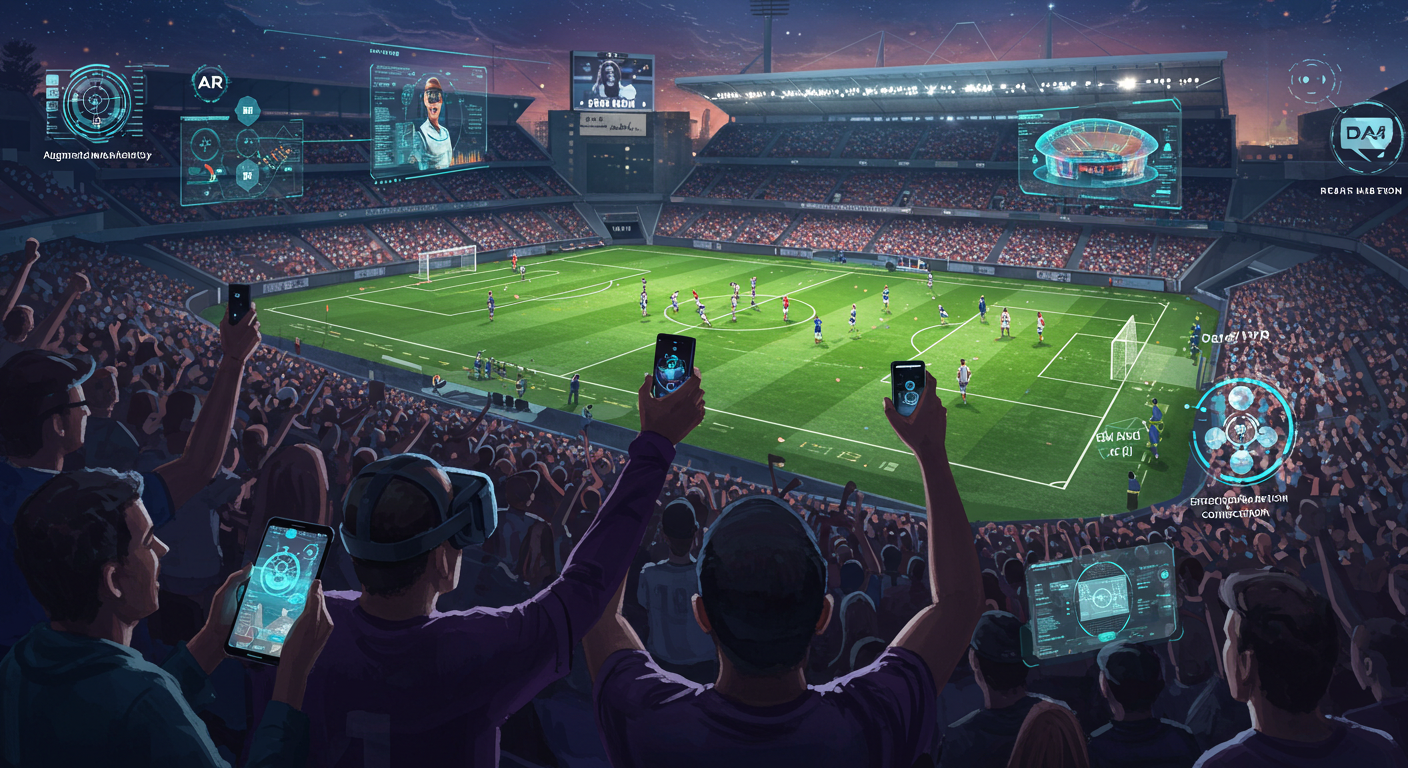In the thrilling world of sports, where emotion is currency and loyalty is earned, a seismic change in marketing strategy is set to fundamentally alter how businesses engage with fans by 2025. The era of passive consumerism, typified by static billboards and transitory television advertising, has officially given way to the era of the experience.
Brands are no longer just sponsoring. They are arranging unforgettable, immersive experiences. These brands are weaving themselves into the fabric of the fan journey to develop deeper, more genuine ties that last long beyond the final whistle. It is now acknowledged that merely being present is no longer adequate. Active participation and emotional engagement are now required.
A digitally native generation demands more than simply watching. This is driving the evolution of fan involvement. Younger viewers, accustomed to participatory digital environments, want sports experiences that are dynamic, personalised, and shareable. This expectation has pushed experiential marketing to the forefront.
Experiential marketing is changing fans from passive observers to active participants, and even co-creators of brand narratives. These immersive activations, often combining physical presence with digital innovation, are precisely designed to heighten rather than detract from the thrill of the game. A considerable effort is now made to create these multi-sensory encounters, where emotional connection is prioritised above everything else.
This dramatic shift is centred on groundbreaking technological developments. Augmented Reality (AR) and Virtual Reality (VR) are being applied with growing complexity. They are profoundly changing fan engagement.
AR allows digital information to be seamlessly superimposed on the real environment. For instance, attendees at a stadium may hold up their phones to view real-time player statistics floating above the pitch. Interactive branded mini-games can also be played during halftime.
Similarly, AR filters for social media platforms allow fans to digitally “try on” team jerseys or celebrate with digital mascots. This results in more user-generated content and organic brand amplification. The second screen, now a constant companion for modern sports spectators, has transformed into a dynamic canvas for these AR-powered experiences. Engagement rates have increased significantly as a result.
Further down the immersive range, VR provides unrivalled fan experiences. Virtual stadiums are being built in the metaverse. This allows spectators from different physical locations to “attend” matches alongside their avatars and share in the communal thrill.
Exclusive VR content, such as behind-the-scenes locker room tours or virtual training sessions with renowned athletes, is now being offered to increase fan devotion. Non-fungible tokens (NFTs) expand digital ownership. They allow teams and companies to distribute and trade digital collectibles, unique player experiences, or virtual items. This opens up entirely new income streams.
These immersive technologies allow sports organisations to transcend physical borders. They are reaching a global audience with unprecedented levels of involvement.
Beyond the technological spectacle, data-driven personalisation is the cornerstone of any great immersive campaign. AI and machine learning algorithms are now analysing vast amounts of fan data. This allows marketers to pinpoint individual preferences, consumption patterns, and emotional triggers with astonishing accuracy.
Hyper-personalised experiences are replacing generic marketing. Content and offers are now tailored to specific fan segments. For example, a financial brand sponsoring a football league might offer exclusive virtual stadium access to fans identified as early digital adopters. A beverage company might provide personalised discounts for in-stadium purchases based on fans’ previous consumption habits.
Furthermore, the authenticity of brand integration is being closely scrutinised. Brands are going beyond simple logo placements. They are aiming to become integral parts of the fan experience.
This includes partnering with athlete-endorsed causes, sponsoring community projects, and providing experiences that genuinely enhance game day. The rise of women’s sports, for instance, has opened new avenues for brands to connect through purpose-driven activations that highlight athleticism and empowerment. These initiatives resonate strongly with a growing and passionate fanbase.
Read also: Apple fought off $2bn in app store fraud in 2024
Sponsorships are now seen as collaborations that create value for the fan, not just the brand.
Measuring the Return on Investment (ROI) of these complex experiential efforts, which often require substantial financial investment, is a multifaceted challenge. Traditional metrics such as impressions are giving way to deeper insights.
These include engagement rates, brand recall, and shifts in consumer sentiment. Social media analytics—likes, comments, and user-generated content—are closely examined to gauge campaign success. Direct purchases linked to specific activations, spikes in website traffic during or after events, and post-campaign surveys measuring purchase intent also contribute to a more comprehensive understanding of impact.
The ultimate goal is not just immediate conversion. It is about building long-term brand loyalty and enhancing customer lifetime value. These represent the powerful and enduring emotional connections forged through immersive experiences.
By 2025, sports marketing is no longer merely about advertising. It is about creativity in experience design. Success comes when cutting-edge technology meets genuine human emotion. When data-driven insights feed creative expression. And when every fan has the chance not just to watch, but to truly live the game.
The brands that master this delicate balance will not only capture attention. They will win hearts and secure their place in the collective memory of passionate sports fans.
See Also: Omotola Bamigbaiye-Elatuyi on 3 key lessons in the FMCG space








Comment
No comments found.